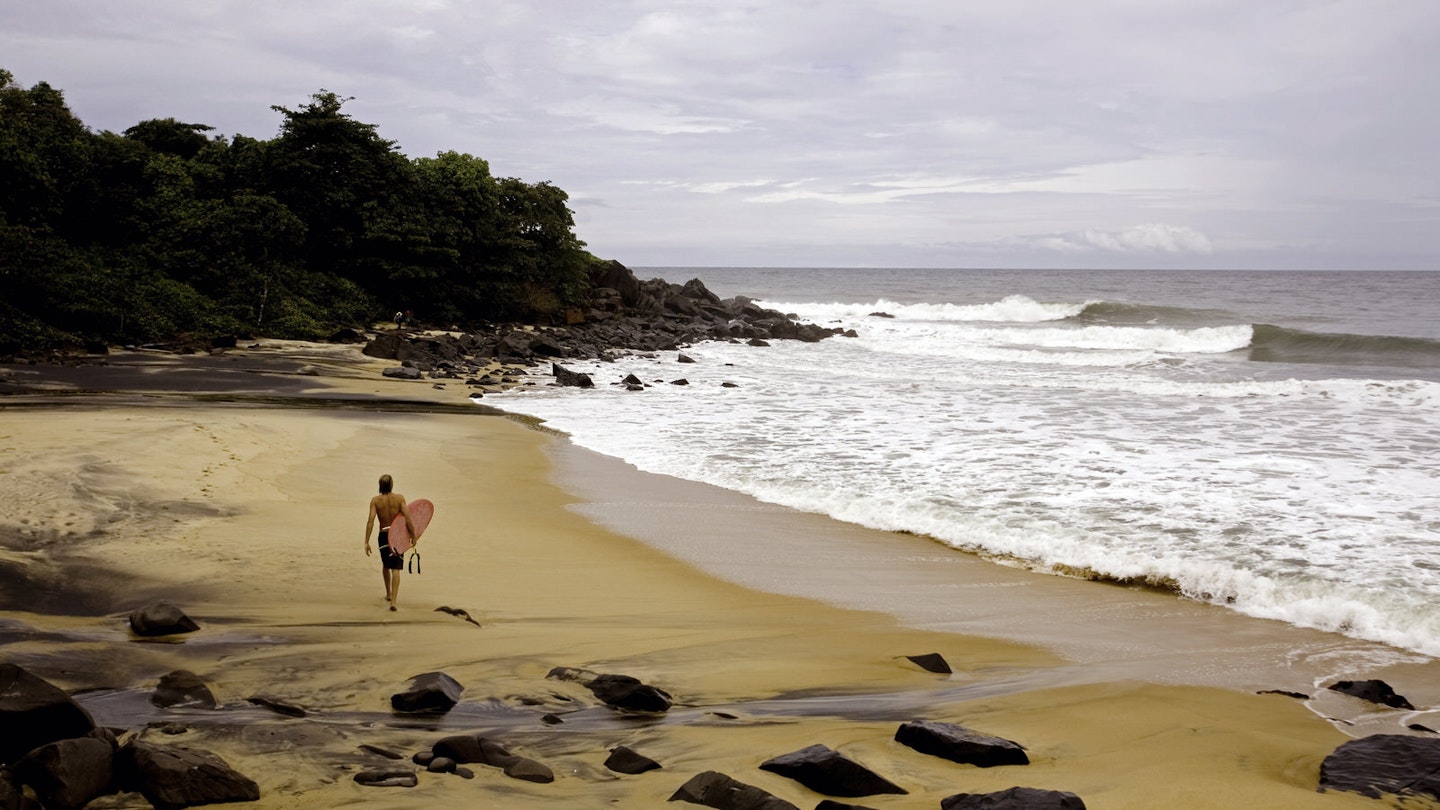Liberia, Africa’s oldest republic, boasts mountains to conquer, cities to explore, expansive sandy beaches to enjoy, and national parks that are home to some of the continent’s most fascinating wildlife. Engaging in activities such as surfing, swimming, trekking, or simply relaxing in a hammock on the rainforest’s edge is all part of the experience. However, few have ventured into this relatively undiscovered destination.
Welcome to one of Africa’s last frontiers. Established as a homeland for freed American slaves, this intriguing locale is gradually on the mend after years of internal conflict. Yet, only a handful of travelers have taken notice. With doors opening to the world after a turbulent past, now is an ideal time to visit if you seek a true adventure away from well-trodden paths.
Where on Earth is Liberia?
In 1822, the American Colonization Society designated a piece of West Africa as a homeland for freed American slaves, a region that had largely escaped outside exploration since European entities established trading posts in the 17th century. Although the history of life in this area before Liberia’s founding remains largely unwritten, newcomers embarked on crafting a society that melds American and West African influences, creating a unique cultural atmosphere.
Today, bordered by Sierra Leone, Guinea, and Côte d’Ivoire, Liberia enjoys a lengthy Atlantic coastline and a densely forested interior that are among West Africa’s least explored regions. The government has recently partnered with Norway to halt logging in Liberia’s pristine rainforests in return for development aid, yet infrastructure for exploration remains limited. To embark on your journey, consider starting with Visit Liberia, a comprehensive resource for all things related to Liberia.
How Do I Get There?
With advance planning, reaching Liberia is feasible. Roberts International Airport, located 35 km southeast of the capital, Monrovia, is served by a limited number of airlines, necessitating a change in cities such as Brussels, Accra, Lagos, Nairobi, or Casablanca. Obtaining a visa is straightforward; Liberian missions abroad are eager to welcome visitors, but a yellow fever vaccination certificate and a passport with six months validity are required.
Arriving in Monrovia marks only the beginning of your adventure; to discover the coast and forested interior, you’ll need to arrange a vehicle, driver, and guide, or endure bumpy minibus or bush taxi rides. Due to the considerable logistical planning required for local travel, many opt for tours arranged by agencies specializing in authentic African experiences.
Five Fascinating Liberia Facts
- Liberia became Africa’s first independent republic in 1847
- 12% of the world’s ships are registered in Liberia
- The president, George Weah, once played football for Man City and Chelsea
- Air pollution levels are lower than in the USA and UK
- Along with Ethiopia, Liberia is one of only two African nations never colonized by European powers
What Is There to See?
Prior to Liberia’s civil war, tourism revolved around its languid beaches, characterized by golden sands and the wild waves of the Atlantic Ocean. These stunning beaches still exist, stretching gloriously along the coast north and south of Monrovia. Although Liberia’s Atlantic coast holds immense tourism potential, the country currently has only a handful of resorts, primarily around the capital and the laid-back surf haven of Robertsport further north. Just outside Monrovia, Libassa Ecolodge seamlessly merges forest and sand, featuring a pool that flows like a tranquil river through its grounds.
Liberia is also home to a rich architectural legacy that merges African motifs with antebellum elements from the American South. However, much of this heritage has fallen into disrepair due to political turmoil. Although the government aims to restore these historic structures, presently, exploration offers a unique and sometimes eerie experience for those drawn to abandoned places.
The quaint town of Harper, positioned near the border of Côte d’Ivoire, was once adorned with grand mansions built by William V.S. Tubman, Liberia’s longest-serving president, who emulated the great plantation houses of the American South. Attractions like Harper’s decaying Star Masonic Lodge, featuring a tall colonnade reminiscent of the Millford Plantation in Pinewood, South Carolina, offer a glimpse into the past, while the William Tubman Mansion resembles an Art Deco cinema hall.
What Is There to Do?
Take full advantage of Liberia’s breathtaking beaches. The winds from the Atlantic create exceptional surfing conditions from May to October, with the greatest swells in April, May, and August. Many seasoned surfers consider Liberia’s left point breaks to be among the best in Africa. Located 80 km northwest of Monrovia, the beach town of Robertsport has evolved into a relaxed surf destination, featuring a collection of surf-oriented resorts and multiple excellent surf breaks (local surfers suggest Cassava and Cotton Tree as top choices). For accommodations, consider Nana’s Lodge with its colorful cabins overlooking the surf or the newly opened Hippo Resort Liberia, offering thatched huts, a beach-bar atmosphere, and delicious wood-fired pizzas.
Liberia’s ultimate attraction lies inland. Accessible via rugged dirt roads from Zwedru or from the coastal town of Greenville south of Monrovia, Sapo National Park comprises the largest surviving section of the upper Guinean forest, which originally extended uninterrupted from Guinea to Togo. By joining a tour arranged in Monrovia—the most practical means to explore—you can camp in the park and venture forth on foot through lush greenery to spot chimpanzees, forest elephants, leopards, and the charming pygmy hippo—a pint-sized relative of its bigger counterpart, which could comfortably fit into a family car’s back seat. Bird enthusiasts can expect to see hornbills, eagles, and brilliantly colored turacos.
Is It Safe?
Although the visible scars of two civil wars (1989-1997 and 1999-2003) persist, visiting Liberia is safer now than it has been in years. Monrovia and the coastal regions have witnessed a return to stability, and infrastructure is gradually improving. However, many roads remain unsurfaced, making travel challenging during the rainy season from May to November. Following the Ebola outbreak in 2014, the World Health Organization declared the region healthy again in 2015.





